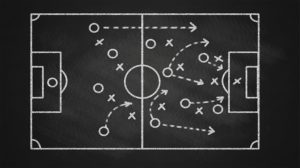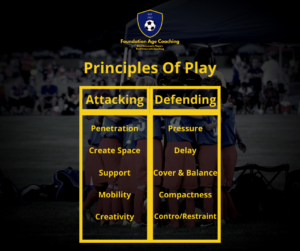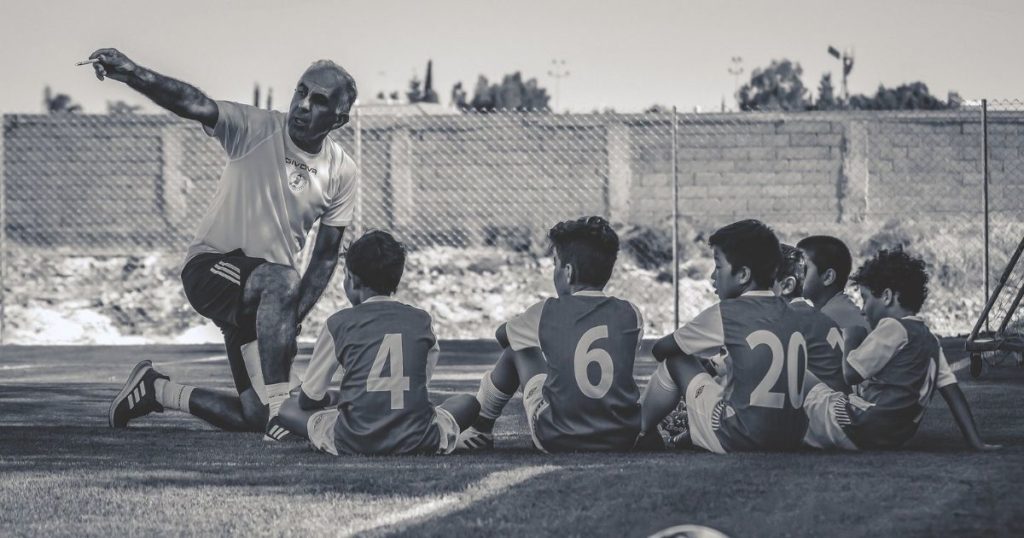"I always put the emphasis on learning. When a player with talent couldn't defend, I put him in defence so he could learn, but that could cost a point. I didn't care, I was busy developing the player." - Johan Cryuff
A young coach recently told me that he was going to work on passing for his next session. When I asked why, the response was that the team didn't pass enough in the last game.
It took me back to my first time coaching teams in 2007. Watch the game, react with a session based on what didn't happen.
No goals? We'll work on finishing. 5 goals in the next game, 7 conceded...we'll work on defending. Concede 2 but don't create a scoring opportunity, passing it is.
I'm cringing just typing that!
Nowadays, I'm pleased to say that I am a lot more methodical with my planning. A season plan is in place, with the focus being long-term learning/development over short term results.
I'm trying to help ingrain certain thought processes based on situations and this has been the way to go in doing that.
Season planning isn't easy. I've certainly made mistakes in the past and it helps to be flexible. Consider the following 5 factors when putting yours together
How Do You Want Things To Look at The End of The Season?

It's hard to plan for anything if you don't have a clear picture of how you want things to look at the end. Football is no different.
Ajax, well-renown for their youth system, have in-depth objectives that their players must achieve before the reach U12.
Is it possible for Grassroots teams to have something similar in place? Of course...though maybe not as in-depth. There's a big difference between an hour week to practice and the 6-8 hours that Ajax have with their kids.
2 pictures need to be in your head...what the individual will look like and what the team will look like. Development is an individual process, the player should always come first.
Once these images are clear, we can then look at the following.
What Technical Components Will Support The Players

“You can’t have tactics without technique” is a comment I consistently heard from a coach that I previously worked with. He came from a background of being a head coach in the Scottish Football League which shaped that viewpoint.
To get to that point, we must help develop the technical skills in our young players.
And this begins in the Foundation phase.
At the youngest ages (4/5/6) players fall in love with the ball. The game is a by product of this.
During this age they learn to dribble, score goals and use different parts of the foot to control the ball.
The older they get, the harder this becomes for children to pick up.
For those that have started, the more they can experiment with different techniques – striking the ball, receiving with different parts of the foot, turns, tricks and moves to name a few.
Even at pro level, players never stop developing their technique. Cristiano Ronaldo is the epitome of this.
It starts NOW!
Consider what you want your players to be able to achieve by the end of the season to fit in with you game model. If it is a possession based game, dribbling, passing & receiving are key. If you prefer a more aggressive style of attacking, think running with the ball and ball striking.
Look at the best players in the world, how do they perform said techniques. What are their body mechanics when they do these things? Take a note, and help your players do it similar.
What Tactical Components Do You Want To See In Your Players

A player has the ball in a 2v1 situation, going to goal. Their team mate is wide and the defender has positioned themselves to block the pass and the dribble.
What would you like to see them do?
There is no right or wrong answer here, it’s all down to preference.
How we want players decision-making to process is a tactical consideration. We can look at this both individually and tactically.
One of the criticisms of US Youth Soccer from my time there was that a lot of coaches would help develop players technically. Players could control, dribble, strike and manipulate a ball just fine.
The coaching of players on how to make decisions left a lot to be desired.
The 2 are not mutually exclusive...they work in synergy. Take this quote from Andrea Pirlo
“Football is played with the head. The feet are just tools.”
Both the Football Association and the US Soccer Federation have promoted a games-based approach. The purpose of which is to encourage more decision-making in players (link/link).
Write down 2/3 situations that players may find themselves in for the format that your team plays in. Make notes on what you want to see from the player on the ball and those around/away from it...
...and consider your approach to the following
How Will You Implement the Principles of Play

"Football is a game of time and space."
The principles of play were first published in 1967, by Allen Wade, as a way to make sense of how teams attack and defend (link).
While some of the terms have changed in recent years, the idea behind them is still the same.
All teams implement the principles in their game model. How they do that, differs greatly.
Some teams will use the defensive principles to have a low block and use the attacking principles to counter attack at speed. Others will look to dominate the ball in the opposing half and press 1like mad men when they lose it.
As previously said about decision-making, there is no right or wrong answer here. Your preference is what matters.
For my grassroots team, we prioritise a principle a season. The idea is that it gives them the repetition of a particular principle over an extended period of time, which helps make their understanding clear.
Other principles are covered, though not seen as a priority.
After this past season at U9, they can now all answer when asked what “support” means.
The principles are there to guide us. Learn them, understand them and use them.
How Much Can You Realistically Cover In A Season
Time.
The only thing guaranteed about it is that it’s limited. Every second counts.
It’s also guaranteed that we don’t have as much time with our player as we would like. Many grassroots coaches are fortunate to get a full hour a week to work with their players.
I currently work in a school where children have 5 hours of both English and Maths lessons a week. The same themes and subject matter are repeated, lesson after lesson.
Grassroots Football, my kids get 1 hour.
Unless they are child geniuses, the chances of them remembering EVERYTHING the following week is extremely unlikely.
Yet we all hear coaches say “we’ve worked on this!”
With this being the case...realistically how much can you cover?
Consider 2/3 core topics. Break in down into terms, as with school. 10 week periods for players to become comfortable with an idea.
Increase the challenge week by week, while sticking to the core ideas from the first session on the topic.
Your players will have time to familiarise themselves and their long term development will pay dividends in future years.

